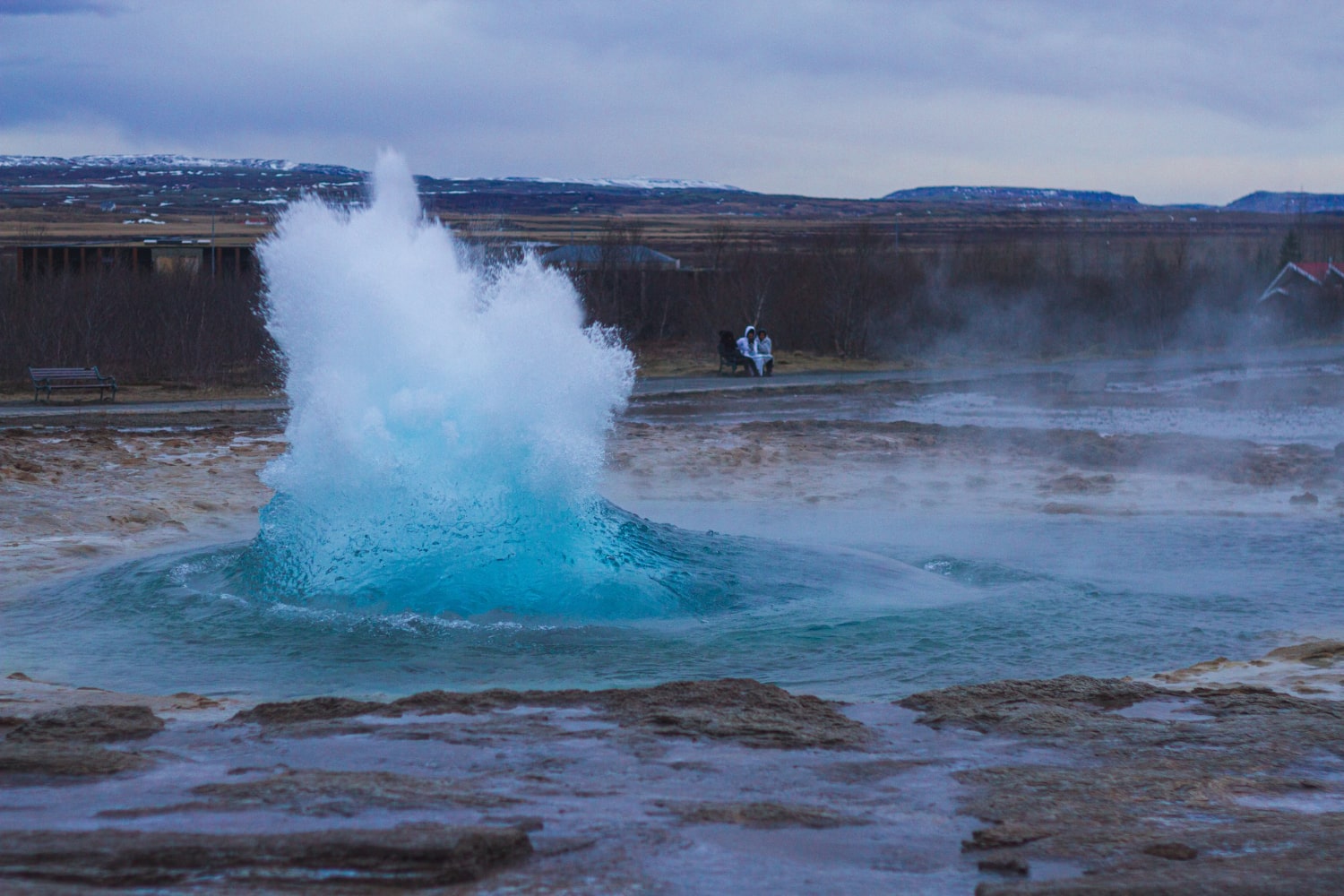Geysers are among the most fascinating natural phenomena on our planet. They shoot boiling water and steam from deep underground into the air, creating dramatic and mesmerizing landscapes. Watching a geyser erupt is like witnessing the living breath of the Earth, a powerful reminder of the planet’s hidden inner forces. Geysers are not only visually stunning but also scientifically, ecologically, and culturally significant. Here is a collection of interesting and surprising facts about geysers that you may not have known.
- Geysers form only in areas with intense volcanic activity where underground water, heat sources, and a system of fractures or channels coexist. This unique combination of conditions is extremely rare. As a result, geysers are found in only a few places around the world.
- The word “geyser” comes from Icelandic and originates from the famous Geysir in Iceland. Its name means “to gush” or “to erupt.” That particular geyser became so well known that its name was adopted as a general term for similar phenomena worldwide.
- The largest concentration of geysers on Earth is found in Yellowstone National Park in the United States. It is home to more than 500 active geysers, which account for over half of all geysers on the planet. The most famous of them is Old Faithful, known for its highly regular eruptions.
- The tallest active geyser is Strokkur in Iceland, which can shoot water up to 30 meters high. However, Steamboat Geyser in the U.S. has reached record-breaking heights, erupting more than 90 meters into the air on rare occasions. These exceptional events showcase the immense power of geothermal forces.
- Geysers operate based on superheated water under pressure in underground chambers. When the pressure builds to a critical point, steam and water are forced through narrow channels to the surface. After an eruption, the chamber refills, and the cycle begins again.
- The duration of a geyser’s eruption can range from a few seconds to several hours, depending on the size and structure of its underground reservoir. Some geysers erupt multiple times a day, while others may erupt only a few times a year. Observing a geyser can feel like watching a natural performance unfold.
- Only five major geothermal regions in the world have active geysers: Yellowstone (USA), Kamchatka (Russia), Iceland, New Zealand, and Chile. All of these areas are characterized by active tectonic or volcanic processes. This explains the rarity and uniqueness of geysers.
- Geysers can cease to function due to earthquakes, landslides, or human intervention. Construction, drilling, or altering the landscape can disrupt the delicate pressure balance within the system. Many geysers have been permanently lost as a result of such changes.
- Geyser water often contains dissolved minerals, particularly silica, which deposits around the vent in white crusts. Over time, these deposits form terraces and intricate natural structures. Such formations add to the visual allure of geyser fields.
- In some cultures, geysers were considered sacred sites where the Earth communicated with the heavens. In Icelandic sagas, geysers were described as magical sources of power. Among the Maori of New Zealand, geysers symbolize the spiritual strength of nature.
- Geysers hold significant scientific value. Researchers study them to better understand underground geological processes and the potential of geothermal energy. Measurements of temperature, pressure, and water composition are used to model volcanic activity.
- The geothermal energy behind geysers can be harnessed to produce environmentally friendly electricity. In Iceland, a large portion of the country’s energy comes from geothermal sources. It’s a prime example of sustainable use of natural resources.
- Some geysers change their eruption patterns over time or even over decades. They may become more active or completely dormant. Such changes are often linked to small-scale seismic shifts or alterations in underground water levels.
- The Valley of Geysers in Kamchatka, Russia, is one of the largest geyser fields in the world. It was only discovered in 1941 and continues to amaze visitors with its wild beauty. Although a 2007 landslide destroyed part of the valley, many geysers still remain active.
- Some geysers eject not just water but mud, forming what are known as mud geysers or mud volcanoes. These occur where hot water mixes with clay and sediment to create a thick, bubbling slurry. Their eruptions resemble boiling gray porridge.
- Many geysers have names, histories, and even fan followings. One example is Big Boil in New Zealand, which erupts every few days and attracts dozens of spectators. Its activity is often recorded in local travel guides and calendars.
- Geysers can significantly alter the surrounding flora and fauna due to their high temperatures and mineral-rich waters. Specialized thermophilic organisms such as algae and bacteria thrive in these conditions. They often create colorful rings ranging from orange to green and blue.
- Geyser activity can fluctuate seasonally, influenced by rainfall, snowmelt, and groundwater levels. A wet summer or snowy winter can increase the frequency of eruptions. This seasonal rhythm adds unpredictability to geysers’ behavior.
- Geysers are major tourist attractions and draw millions of visitors every year. At the same time, they are extremely sensitive to human impact. That’s why many geyser sites enforce strict protection rules to preserve them for future generations.
Geysers are not just spectacular displays of steam and water but living evidence of Earth’s internal energy. These interesting facts highlight the complexity, beauty, and significance of geysers in both scientific and environmental contexts. You may not have known that each eruption reflects a delicate balance of natural processes deep within the Earth. Fascinating facts about geysers inspire awe and encourage us to protect these rare and powerful wonders of the natural world.





